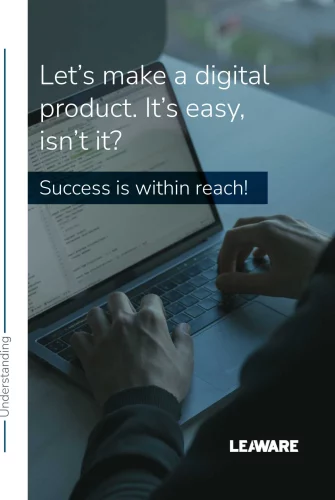Introduction to Blazor 8
 In the rapidly evolving landscape of web development, Blazor 8 emerges as a beacon of innovation and efficiency, particularly for startups and enterprises aiming to swiftly navigate the Minimum Viable Product (MVP) phase. As part of the .NET ecosystem, Blazor 8 inherits the robustness and security features that .NET developers have come to rely upon, elevating these with a component-based architecture that seamlessly integrates with modern web standards. This framework’s appeal lies not just in its ability to streamline the development process but also in its facilitation of powerful, client-side web applications using C# instead of JavaScript. The convergence of features such as WebAssembly and SignalR in Blazor 8 enables developers to craft interactive web UIs with real-time capabilities, without departing from the .NET environment. This attribute is particularly pivotal for MVP development, where time and resources are often constrained, yet the pressure to deliver an engaging and functional product is high. The significance of adopting advanced development frameworks for creating compelling MVPs cannot be overstated, as highlighted in numerous developer guides and discussions, including insights on mastering technologies like Blazor that can profoundly impact the efficiency and effectiveness of the development process. As we delve deeper into the attributes of Blazor 8, it becomes evident that this framework is not just a tool for development; it is a strategic accelerator for bringing innovative ideas to market with the velocity and agility that today’s competitive landscape demands.
In the rapidly evolving landscape of web development, Blazor 8 emerges as a beacon of innovation and efficiency, particularly for startups and enterprises aiming to swiftly navigate the Minimum Viable Product (MVP) phase. As part of the .NET ecosystem, Blazor 8 inherits the robustness and security features that .NET developers have come to rely upon, elevating these with a component-based architecture that seamlessly integrates with modern web standards. This framework’s appeal lies not just in its ability to streamline the development process but also in its facilitation of powerful, client-side web applications using C# instead of JavaScript. The convergence of features such as WebAssembly and SignalR in Blazor 8 enables developers to craft interactive web UIs with real-time capabilities, without departing from the .NET environment. This attribute is particularly pivotal for MVP development, where time and resources are often constrained, yet the pressure to deliver an engaging and functional product is high. The significance of adopting advanced development frameworks for creating compelling MVPs cannot be overstated, as highlighted in numerous developer guides and discussions, including insights on mastering technologies like Blazor that can profoundly impact the efficiency and effectiveness of the development process. As we delve deeper into the attributes of Blazor 8, it becomes evident that this framework is not just a tool for development; it is a strategic accelerator for bringing innovative ideas to market with the velocity and agility that today’s competitive landscape demands.
Accelerated Development with Blazor 8
 One of the substantial benefits offered by Blazor 8 in the realm of MVP development is its capacity to significantly accelerate the production process. This is achieved through its innovative component-based architecture, which promotes the reuse of code across different parts of the application, thereby reducing development time and effort. Developers are now empowered to construct complex, feature-rich web applications with less code and in a shorter timeframe, thanks to Blazor’s seamless integration with existing .NET libraries and its comprehensive toolset. This accelerates not only the initial development phase but also subsequent iterations, making it easier to respond to user feedback and evolve the MVP productively. Furthermore, Blazor 8’s efficient handling of dependencies and its sophisticated routing capabilities enable the development of highly responsive and scalable web applications. The significance of speed in taking a product from concept to market cannot be underestimated; swift development cycles are critical in today’s fast-paced market, where being first can often mean the difference between success and obscurity. Leveraging frameworks that expedite development, as elaborated in the exploration of Maximizing .NET Projects with OpenAI API, can significantly contribute to a startup’s ability to launch an MVP swiftly and efficiently. By optimizing development processes and reducing time-to-market, Blazor 8 stands as an indispensable tool in the arsenal of developers aiming to achieve a competitive edge with their MVPs.
One of the substantial benefits offered by Blazor 8 in the realm of MVP development is its capacity to significantly accelerate the production process. This is achieved through its innovative component-based architecture, which promotes the reuse of code across different parts of the application, thereby reducing development time and effort. Developers are now empowered to construct complex, feature-rich web applications with less code and in a shorter timeframe, thanks to Blazor’s seamless integration with existing .NET libraries and its comprehensive toolset. This accelerates not only the initial development phase but also subsequent iterations, making it easier to respond to user feedback and evolve the MVP productively. Furthermore, Blazor 8’s efficient handling of dependencies and its sophisticated routing capabilities enable the development of highly responsive and scalable web applications. The significance of speed in taking a product from concept to market cannot be underestimated; swift development cycles are critical in today’s fast-paced market, where being first can often mean the difference between success and obscurity. Leveraging frameworks that expedite development, as elaborated in the exploration of Maximizing .NET Projects with OpenAI API, can significantly contribute to a startup’s ability to launch an MVP swiftly and efficiently. By optimizing development processes and reducing time-to-market, Blazor 8 stands as an indispensable tool in the arsenal of developers aiming to achieve a competitive edge with their MVPs.
Enhanced User Experience
 Beyond the undeniable acceleration of the development process, Blazor 8 sets a new standard for enhancing the user experience (UX) within the domain of MVP development. In the digital age, where user engagement and satisfaction are paramount, Blazor 8’s adeptness in crafting dynamic, interactive web applications that operate seamlessly across various devices is a hallmark of its innovation. This framework’s ability to execute client-side C# code directly in the browser through WebAssembly, without the need for plugins or transpiling to JavaScript, means that applications can run faster and smoother, contributing to a markedly improved UX. Moreover, its component-based structure allows for the creation of rich, customizable UI components that can be easily shared and reused, ensuring consistency and efficiency in design. The impact of such an enhanced UX on the success of an MVP cannot be overstressed; it not only aids in retaining initial users but also in attracting new ones through positive reviews and word-of-mouth. Establishing a strong user base early on is crucial for gathering valuable feedback that will inform future iterations, making the choice of development framework all the more critical. Articles like Smart Planning of Mobile App Architecture underline the importance of integrating advanced frameworks like Blazor 8 early in the development process to avoid costly redesigns and reiterations. By leveraging Blazor 8’s capabilities to provide an unparalleled UX, developers can ensure their MVP not only meets but exceeds market expectations, setting a strong foundation for the product’s growth and iteration.
Beyond the undeniable acceleration of the development process, Blazor 8 sets a new standard for enhancing the user experience (UX) within the domain of MVP development. In the digital age, where user engagement and satisfaction are paramount, Blazor 8’s adeptness in crafting dynamic, interactive web applications that operate seamlessly across various devices is a hallmark of its innovation. This framework’s ability to execute client-side C# code directly in the browser through WebAssembly, without the need for plugins or transpiling to JavaScript, means that applications can run faster and smoother, contributing to a markedly improved UX. Moreover, its component-based structure allows for the creation of rich, customizable UI components that can be easily shared and reused, ensuring consistency and efficiency in design. The impact of such an enhanced UX on the success of an MVP cannot be overstressed; it not only aids in retaining initial users but also in attracting new ones through positive reviews and word-of-mouth. Establishing a strong user base early on is crucial for gathering valuable feedback that will inform future iterations, making the choice of development framework all the more critical. Articles like Smart Planning of Mobile App Architecture underline the importance of integrating advanced frameworks like Blazor 8 early in the development process to avoid costly redesigns and reiterations. By leveraging Blazor 8’s capabilities to provide an unparalleled UX, developers can ensure their MVP not only meets but exceeds market expectations, setting a strong foundation for the product’s growth and iteration.
Typical topics we cover during consultation:
- How can I use AI to automate my company’s business processes?
- Which functionalities of my application should I enhance with AI?
- Rapid verification of the application code quality
- Why are there so many errors in my application?
- Am I ready for MVP development?

Cost Efficiency and Resource Optimization

Real-World Success Stories

Download your whitepaper
- Learn why software development and JTBD theory are important for your business’ product success
- Discover how to make sure your product will have a good impact on the market
- Discover how to make sure your product will make your users happy when getting the job done
